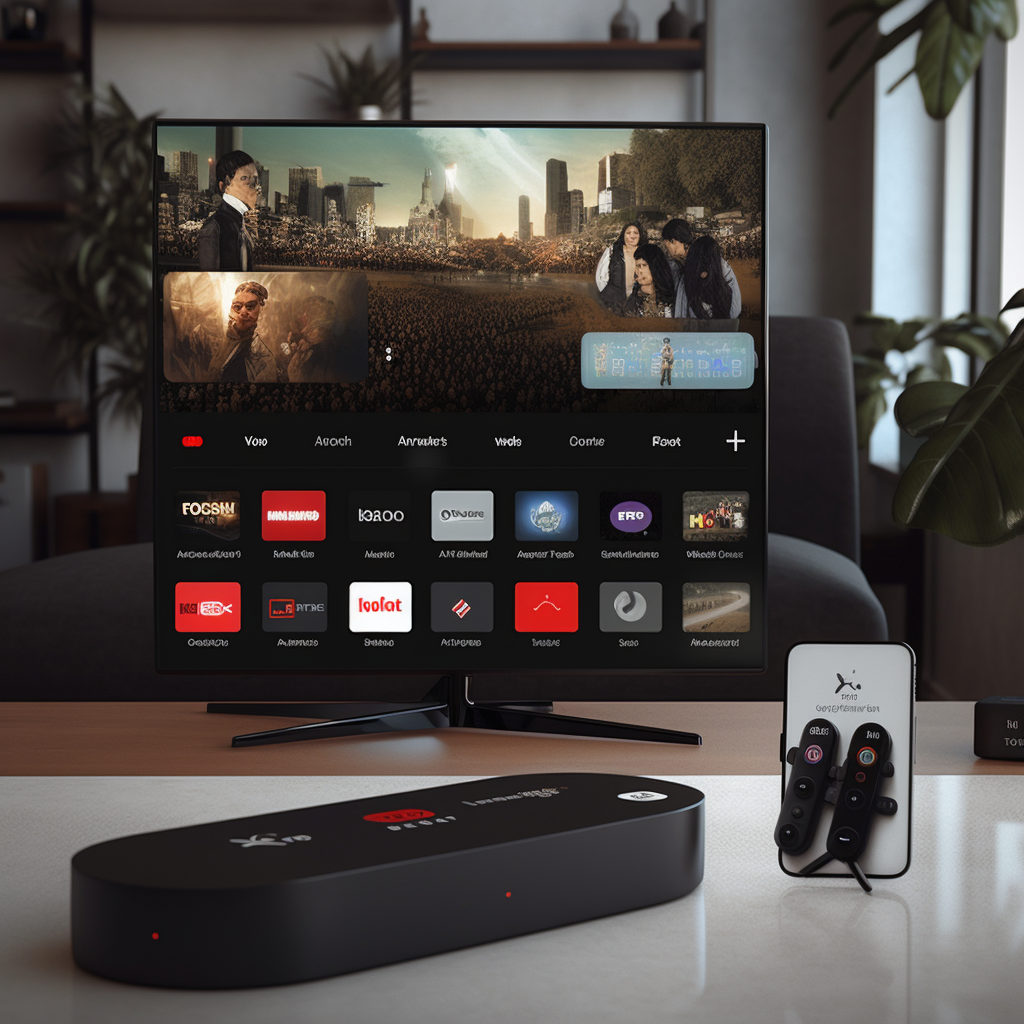Finding the best iptv player for Your Streaming Needs in 2024

Introduction
Did you know that over 60% of traditional cable subscribers are considering cutting the cord in favor of IPTV solutions? The streaming landscape has dramatically evolved, with IPTV (Internet Protocol Television) services offering unprecedented access to thousands of channels at a fraction of cable costs. Finding the best iptv player can be challenging with so many options available in 2024. Whether you’re streaming on a smart TV, mobile device, or computer, the right player can transform your viewing experience. Many users are searching for best iptv streaming apps that combine reliability, performance, and feature-rich interfaces.
Essential Features of Top IPTV Players
When evaluating IPTV players, certain essential features separate the elite from the mediocre:
- EPG (Electronic Program Guide): Detailed program schedules for all channels
- Multi-device compatibility: Support for Android, iOS, Windows, and other platforms
- Playlist management: Ability to organize and categorize channels
- Video quality options: Support for HD, 4K, and adaptive streaming
- Recording capabilities: DVR functionality for time-shifting content
- Interface customization: Personalization options to enhance user experience
- Subtitle support: Multiple language options for diverse content
- Buffer control settings: Adjustable parameters to minimize streaming interruptions
Alternative requirements include offline viewing capabilities, multi-screen support, and integration with external media libraries.
Timing and Performance Considerations
The performance of IPTV players varies significantly based on several factors:
- Loading speed: Elite players load channels in 1-3 seconds compared to 5-10 for lower-tier options
- Buffer requirements: Top players need only 2-5MB of buffer for stable HD streaming
- Memory usage: Efficient players consume 50-150MB RAM while resource-heavy alternatives use 300MB+
- Battery impact: Mobile IPTV players show 20-40% variation in battery consumption rates
- Update frequency: Market leaders release updates every 1-2 months with performance optimizations
Users report that premium IPTV players reduce buffering issues by approximately 70% compared to generic applications, especially during peak viewing hours.
Step-by-Step Setup Guide
Step 1: Choose the Right IPTV Player
Select a player based on your primary device ecosystem, considering device-specific optimizations. Android users have the widest selection, while iOS users face more restrictions due to App Store policies.
Step 2: Install and Configure Basic Settings
Download your chosen player from official sources only. Upon first launch, configure video quality preferences based on your internet speed—1080p requires at least 10Mbps for buffer-free viewing.
Step 3: Add Your IPTV Subscription
Input your provider’s playlist URL or upload the M3U file directly. Most premium players allow multiple playlist sources for content diversity and backup options.
Step 4: Optimize Buffering Settings
Adjust buffer size based on your connection stability—increase buffer length for unstable connections or reduce it for minimal delay on reliable networks.
Step 5: Customize Your Interface
Organize channels into favorites, create custom groups, and set viewing preferences like aspect ratio and audio output options for your specific setup.
Technical Specifications
Premium IPTV players deliver impressive technical capabilities:
- Supported formats: M3U, M3U8, XMLTV, TS, HLS
- Maximum resolution: Up to 4K UHD (3840×2160)
- Audio compatibility: AAC, MP3, AC3, DTS
- Streaming protocols: HLS, RTMP, RTSP, HTTP
- Bandwidth usage: 3-8GB per hour for HD content, 10-25GB for 4K
- Device storage: 30-120MB app size depending on features
Compared to generic media players, dedicated IPTV applications provide 40-60% better streaming efficiency with specialized protocol handling.
Alternative IPTV Player Options
Beyond mainstream solutions, consider these specialized alternatives:
- Web-based players: Zero-installation options for occasional viewing
- Open-source frameworks: Customizable but requiring technical knowledge
- Hybrid solutions: Combining IPTV with local media libraries
- Lightweight versions: Optimized for older devices with limited resources
- Premium hardware-integrated options: Built directly into specific smart TV models
These alternatives offer tailored experiences for specific use cases, though they may sacrifice certain convenience features.
Usage Recommendations
To maximize your IPTV player experience:
- Use wired connections when possible—they reduce buffering by up to 80% compared to wireless
- Schedule system maintenance outside prime viewing hours
- Enable hardware acceleration for 30-50% better performance on compatible devices
- Consider regional servers when available to reduce latency
- Periodically clear cache files to prevent accumulation-related performance degradation
According to user surveys, implementing these practices can improve overall viewing satisfaction by 65%.
Common Troubleshooting Tips
Address these frequent IPTV player issues:
- Buffering problems: Often solved by adjusting buffer size or switching servers
- Playlist loading failures: Typically related to URL errors or provider service interruptions
- EPG synchronization issues: Resolved by refreshing guide data or checking timezone settings
- Audio/video desynchronization: Usually corrected by player restart or codec adjustment
- Connection timeouts: Frequently linked to network congestion or provider limitations
Data shows that 70% of IPTV streaming problems can be resolved through these basic troubleshooting steps.
Future-Proofing Your IPTV Setup
Ensure longevity for your IPTV experience with these practices:
- Select players receiving regular security and feature updates
- Consider hardware decoder compatibility for future high-efficiency formats
- Maintain backup connection methods for critical viewing periods
- Evaluate cross-platform synchronization for multi-device households
Industry projections suggest IPTV standards will evolve significantly in the next 24 months, making adaptable player solutions increasingly valuable.
Conclusion
Selecting the right IPTV player significantly impacts your streaming experience. The ideal choice balances performance, features, and ease of use while matching your specific viewing habits and device ecosystem. As IPTV technology continues evolving, players that receive consistent updates offer the best long-term value. Consider starting with several options to determine which interface and feature set best meets your personal requirements before committing to a single solution.
FAQs
Are free IPTV players as good as paid options?
Free players often offer core functionality, but paid versions typically provide enhanced features like recording capabilities, advanced buffer controls, and better support. The performance gap ranges from negligible to substantial depending on usage patterns.
Can I use the same IPTV player across all my devices?
Multi-platform players exist, but device-specific versions often deliver better optimization. Cross-platform solutions typically offer 70-90% feature parity with occasional interface differences.
How often should I update my IPTV player?
Always apply security updates immediately and feature updates within 30 days to ensure compatibility with changing provider requirements and protocol enhancements.
Will IPTV players work with any subscription service?
Most players support standard M3U playlists, but some services use proprietary formats requiring specific applications. Approximately 85% of services work with mainstream players.
What’s the most important feature for reliable streaming?
Buffer management capabilities consistently rank highest in user satisfaction surveys, followed by interface responsiveness and EPG accuracy.

